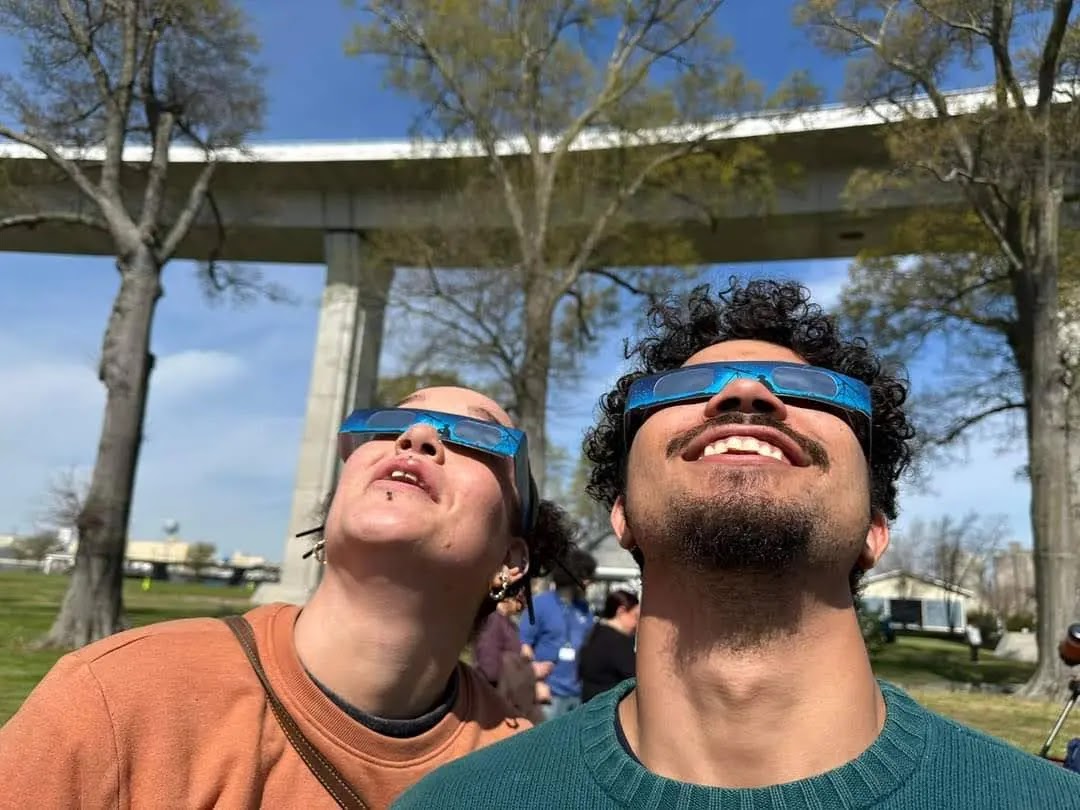On April 8th, Illinoisans will get to experience one of astronomy’s greatest marvels: a total solar eclipse. While typically only visible from the same place every three or four centuries, April’s total solar eclipse will be the second time in just seven years that the celestial phenomenon can be seen in the state. Local and out-of-town stargazers who want to experience this rare event can expect to see a total eclipse across southern Illinois at some point between 1:57 PM and 2:08 PM.
Before you enjoy the out-of-this-world spectacle, you’ll want to take a few precautions to make sure you can view the eclipse safely. Looking at a total eclipse without any equipment is perfectly safe during the few minutes when the sun is completely covered by the moon, or during “totality.” However, looking at the eclipse before and after totality can be harmful to the naked eye. To avoid any damage, it is important to do the following:
- Use a reputable pair of eclipse glasses or handheld viewers whenever looking at the eclipse before or after totality. If you are unsure whether your eclipse glasses are safe to use, refer to the list of safe solar viewers created by the American Astronomical Society.
- If you still have eclipse glasses or handheld viewers from 2017, it is best to find a new pair to ensure that the filter you are using is scratch-free and not faded. If you do not have access to eclipse glasses or solar viewers, or if you are feeling handy, you can make your own eclipse projector using common household items.
- To determine if the eclipse is in totality, look at it while using your eclipse glasses or handheld viewer. If you cannot see any part of the sun, it is safe to look at it directly without safety equipment. Just be sure to use your equipment again as soon as the sun begins to reappear.
- When you are done looking at an eclipse that is not in totality, always look away before removing your eclipse glasses. Looking at a partial eclipse for just a split second can cause serious damage to unprotected eyes.
If you’d like to get a closer look at the eclipse, or you want to get a picture to send to your friends, there is one additional step you must take to protect both you and your equipment. The magnifying ability of the lenses in telescopes, binoculars, and cameras makes the light emitted by the solar eclipse even greater, which can damage your equipment and your eyes, even while wearing eclipse glasses. To prevent this, it is important to attach a solar filter to the lens of any magnifying device that you plan on pointing at a partial eclipse. Not only do these lenses prevent damage, but they also provide a far better view of the eclipse.
Once you have ensured that your eyes and lenses are covered, you are almost ready to experience a total solar eclipse safely. All that is left to do is ensure that the rest of your body is protected from a long day spent in the sun. While experiencing the solar eclipse, make sure to:
- Stay hydrated
- Apply plenty of sunscreen
- Wear light-colored, loose-fitting clothing
